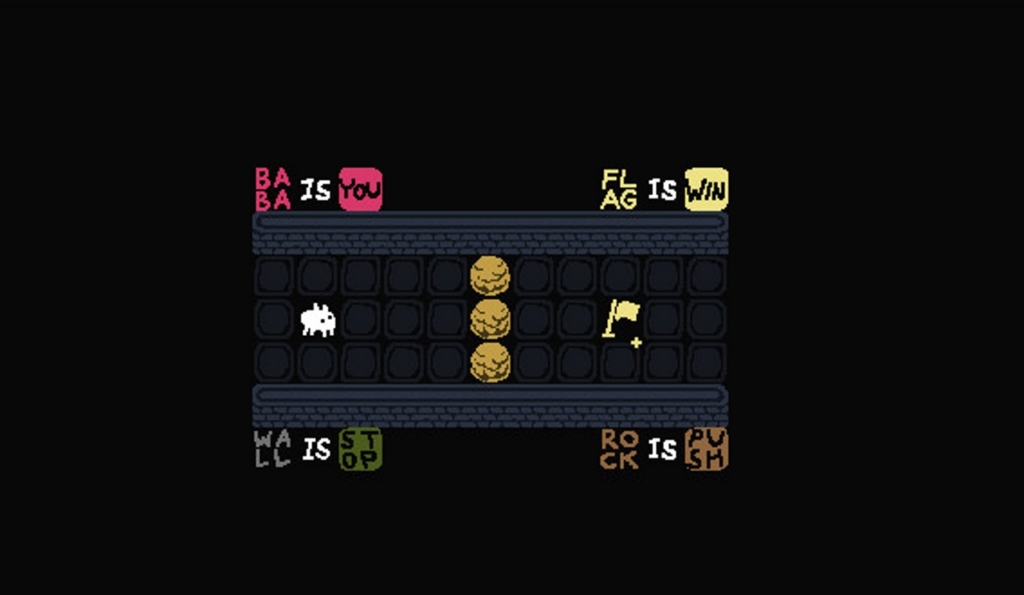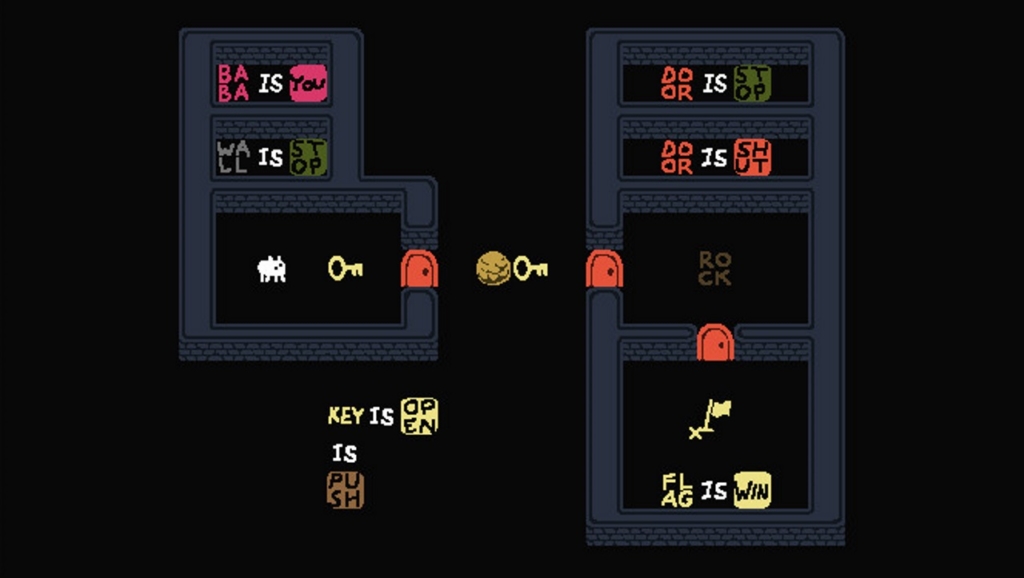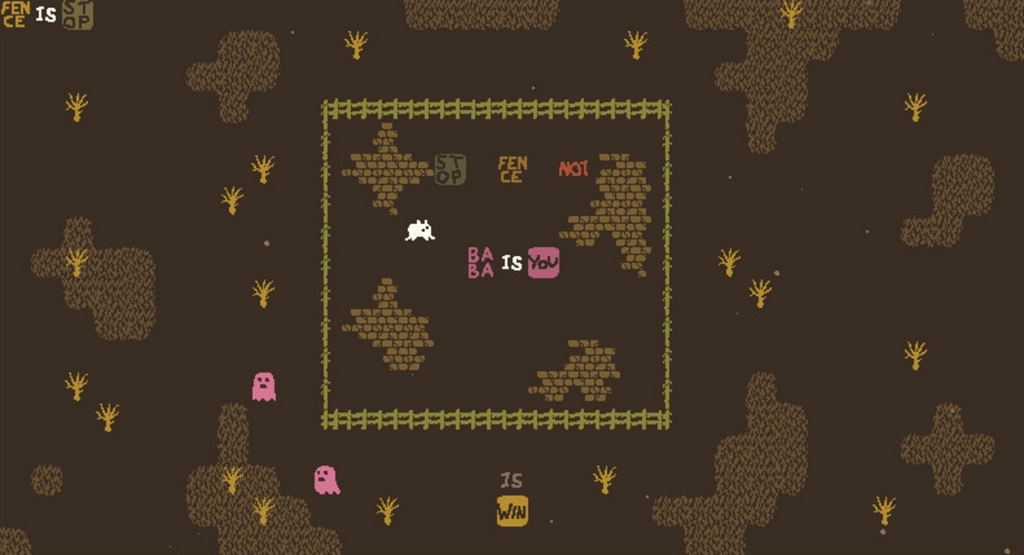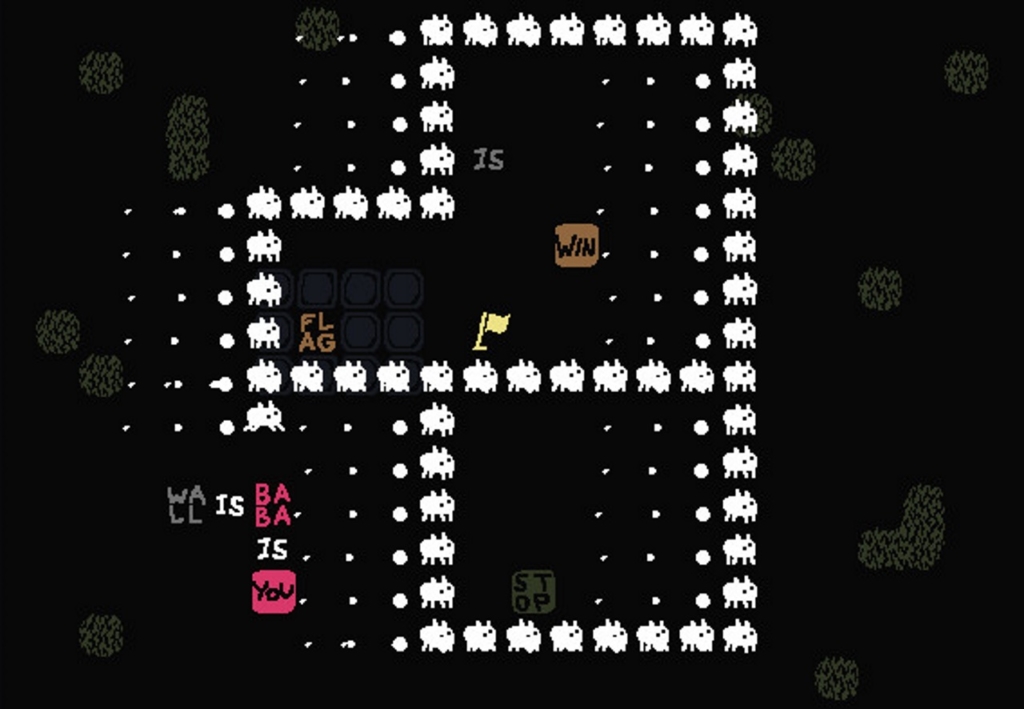Not a Review: Baba Is You — A New Way to Puzzle
by May 2, 2019 @ 12:15 pm

This was originally conceived as a traditional score-based review of Baba Is You. But the more I played the game — the more the game played with me — I began realizing that a standard review with a score at the end didn’t make much sense in relation to what I wanted to say about Baba Is You. Maybe I’d give the game an 8 or 9 out of 10 if I was forced to give it a score. But Baba Is You made me think differently while playing it, so I’m thinking differently while writing about it, too.
A Different Kind of Puzzler
If the question is whether or not I enjoyed my time with Baba Is You, then the answer is, simply, yes. But more than just having a really good time with the game, I found it fascinating. The puzzles are captivating, but even before they’re captivating, they’re inviting. You’re dropped onto this single screen with cartoony sprites and text bunched up in block shape, and you can’t help but to think, “Heeeey, this looks neat!”
At least that’s what I thought.

I saw the first level, and then the second, and then the third, and so on… And I just kept oooh-ing and aaah-ing at the dichotomy of these stages — they looked simple and small, but I knew they were complex and thought-provoking.
If you haven’t played Baba Is You or checked out in-game footage, you probably think these are the pretentious, esoteric ramblings of a madman. If you still don’t know what Baba Is You is, well, it’s a block-pushing puzzle game. Simple as this genre may appear on paper, Baba Is You redefines the way you play. Or rather, it lets you redefine the way you play. Wait, what…?
Baba Is You isn’t just about pushing blocks to open doors or pathways. No, it’s a lot more complex than that. In this game, you’re pushing blocks that are made up of text such as DEFEAT, FLOAT, SINK, and so on to alter — and in some instances, create — the rules for each individual stage.

The first words you’re exposed to are BABA, IS, and YOU. These words set the foundation for the game’s most basic rule: You are Baba, the titular sheep-creature that you directly control. In that same introductory level you’ll find other rules. WALL IS STOP means you can’t move past walls. ROCK IS PUSH means you can push the rocks that are blocking Baba’s path. FLAG IS WIN means that when you touch the flag behind those push-able rocks you will clear the level.
The simplicity of the game’s introductory level is such that you’re instantly taught how the game functions, how the rules work. It’s not too long before you’re met with roadblocks that force you to think differently, though. Most of those blocks of text can be manipulated. You can push the FLAG from the phrase FLAG IS WIN and put ROCK in its place, which means you could then touch a rock and clear the level. Heck, some stages allow you to change the endgame requirement to BABA IS WIN, thus resulting in an insta-victory.

The scenarios I mentioned above are simple examples. At its most exciting, Baba Is You has you changing the functions of deadly crabs and skulls, spawning multiple Babas, becoming the flag, or moving impenetrable walls (you can become the wall and shift entire structures around the screen). Baba Is You can be as wild as you want it to be, but even if you’re taking a reserved approach with its gameplay mechanics, you’re bound to have your mind blown at a frequent rate.
Baba Is You constantly rewards your curiosity. It encourages that you experiment with its rules. The game wants you to break it. Hell, the game needs you to mess with it. That much is evident in the way that errors aren’t fatal — you can rewind each and every single move made in the game or hit the restart button and instantly start any given level from the top. This is an puzzler that wants you to succeed by trying different things, failing, thinking outside the box, and reworking its very infrastructure. It’s quite amazing.
Bring a Friend
I played through the first world in Baba Is You by myself. It was fun. It was mesmerizing. I had a good time. But the moment Baba Is You really entered that next level of beguilement for me was when I took my laptop to my 9-5 job and started playing the game during my lunch break. In the break room there were a couple warehouse guys and some friends. And that’s when the adventure really began.

One friend dismissed the game, saying it “looked stupid.” It wasn’t for him, and that’s fine. Another friend, however, immediately started jumping in, and before I knew it, we were taking on the game’s puzzles and reworking its mechanics together. It was a cooperative experience that made the game even more wholesome. There were puzzles that I struggled with that my friend was able to solve, and there were others where I took the lead. We constantly traded off. There were even stages where our roles as “puzzle leader” changed multiple times the deeper we got into a challenge.
I don’t know if Baba Is You is meant to be a solely single player experience, but given how you can make and break the way the game works mechanically within the realm of the game itself, I’d like to think that you can apply that same logic to its external blueprint.
Ultimately, Baba Is You is all about lateral thinking. The game wants you to play it your way. It provides you with foundations and rules and walls, and it invites you to shake those foundations to their core, break and change those rules, and do whatever the heck you want with those walls, whether that’s removing their ability to block your path or turning into those walls and reaching FLAG IS WIN as a giant brick structure.
Follow this author on Twitter.